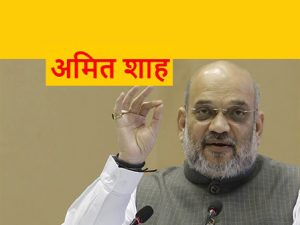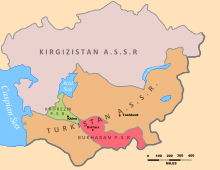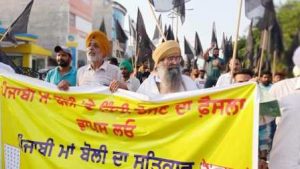Hindi as One-Language: Probable Language War?
Do we need a common unifying language in the nation? Home Minister Amit Shah’s suggestion to make Hindi a connecting language for people and culture is not seen through the eyes of politics.

The recent buzz over the tweet by home minister Amit Shah on the sidelines of Hindi Diwas, ‘India is a land of many languages and every language has its relevance, but it is important to have one language across the entire country that will be the country’s identity abroad’ stirred another debate over Hindi to be Indian identity. This immediately led to a nationwide debate as people across the nation were either opposing or favouring the idea. As usual, the southern states were quick to register their protest against Hindi over their language. Netizens took to social media such as Twitter by trending #stophindiimposition #StopHindiImperialism to set their protest.
Parties such as the DMK, Congress, Left joined the bandwagon to register their protest to take back the proposal by Home Minister Amit Shah. DMK chief tweeted in response saying, ‘this is India, not Hindia’ and also warned about the possible ‘language war’. Former CM of Karnataka HD Kumaraswamy tweeted, ‘When will Narendra Modi celebrate Kannada language day, as it is also a Scheduled language as per the Constitution, alongside Hindi’.
All official languages in our country are equal. However, as far as Karnataka is concerned, #Kannada is the principal language. We will never compromise its importance and are committed to promote Kannada and our state's culture.
— CM of Karnataka (@CMofKarnataka) September 16, 2019
The fear of non-Hindi speaking states goes back to the pre-independence era in 1938 when the then Chief Minister of Madras presidency Rajagopalachari issued an G.O. making Hindi compulsory in secondary schools. Similar agitations followed during 1946, 1965, 1968, 1986, and 2014 against Hindi imposition in Tamil Nadu. Various instances tell us how Hindi imposition created unrest among non-Hindi speakers to fight back against any form of imposition. The largest agitation took place in 1965, where students took to streets in huge numbers paving the way for DMK success in 1967 assembly elections routing the Congress.
Article 351 of the Constitution does say that ‘It shall be the duty of the Union to promote the spread of the Hindi language, to develop it so that it may serve as a medium of expression for all the elements of the composite culture of India and to secure its enrichment by assimilating without interfering with its genius, the forms, style and expressions used in Hindustani and in the other languages of India specified in the Eighth Schedule, and by drawing, wherever necessary or desirable, for its vocabulary, primarily on Sanskrit and secondarily on other languages’. Hence, the government clearly justifies its move to promote Hindi as a link between the citizens to have a common language of communication.
Now you are constrained to prove to us that India will continue to be a free country.
You must consult the people before you make a new law or a new scheme. pic.twitter.com/u0De38bzk0
— Kamal Haasan (@ikamalhaasan) September 16, 2019
Historical Reasons
The constituent assembly held a series of debates on the adoption of National language in which the Constitution was to be written in, and the language in which the proceedings of the Constituent Assembly were to be conducted were the main linguistic questions debated by the framers of the Constitution. There were pro Hindi faction from the Hindi-speaking states and the opposition from southern states like T. T. Krishnamachari, G. Durgabai, T. A. Ramalingam Chettiar, N. G. Ranga, N. Gopalaswamy Ayyangar. After several rounds of debates in 1949, a deal was struck commonly referred to as Munshi-Ayyangar formula, wherein Hindi was made an official language instead of the original idea of ‘National language’. Meanwhile, the government should try and promote Hindi in the non-Hindi speaking states to phase out English gradually.
Also Read : Pds System One Nation One Ration Card And Beyond
Later, three-language formula was worked out in 1968: Hindi for Hindi-speaking states, English along with modern Indian language (Preferably South Indian language) and Hindi, English and Regional languages for Non-Hindi states. This created a furor in southern states, especially in Tamil Nadu, where the then CM C. N. Annadurai said, ‘What serves to link us with the outside world is certainly capable of rendering the same service inside India as well. To plead for two link languages is like boring a smaller hole in a wall for the kitten while there is a bigger one for the cat. What suits the cat will suit the kitten as well’.
Language Wars
There are various instances in the past that suggest that things have not gone down well when a language was forcefully imposed over the other different cultural identities.

The USSR under Stalin crushed the ethnic groups by appointing Russian ethnic leader over the ethnic cultural identities. This practice continued till the disintegration of the USSR under Mikhail Gorbachev, where he replaced the Russian ethnic secretary to the Kazakhstan region. Finally, the USSR split into fifteen different nations over the conflicts since the 80s between Armenian–Azerbaijani, Uzbek-Meskhetian Turk conflict and various ethnic groups. We are close witnesses to the conflict that took place in the neighbouring Sri Lanka when it introduced the famous Sinhala Only Act in 1956, preferring English and Sinhala to be the official languages of Sri Lanka, leaving out Tamil, which led to the civil war that lasted five decades. After the formation of Pakistan, Urdu was declared to be the only national language leaving out Bengali (which was spoken by East Pakistan). Which created a huge uproar and clash between students of Dhaka; eventually, the government cowed down to the demands and sentiments by granting official status to Bengali with addition to Urdu.
Also Read : Indian Sign Language Yearning For Recognition And More
Hindi Exclusion Myth or Reality

The ground reality in southern states seems to suggest otherwise, where we get some staggering numbers. Out of all, the Hindi Prachar Sabha in Southern India, 73 per cent of the teachers are based in Chennai. Tamil Nadu tops the list with 10,709 teachers, whereas the rest of the states (AP, Kerala, Karnataka and Telangana) combined has 3,787 teachers. Dakshina Bharat Hindi Prachar Sabha General Secretary S. Jeyaraj, as quoted in The Hindu, says ‘In Tamil Nadu, Hindi is taught in self-financing schools, using the syllabus of the Dakshin Bharat Hindi Prachar Sabha, as the number of students went up in the last two years, we had to reschedule our exams’.
In fact, Periyar (E. V. Ramasamy Naicker) in 1927 donated his house in Erode for Hindi training Institute. The number enrolled in the colleges rose even during anti-Hindi agitations. Leaders of both Dravidian parties have often been quoted saying that they are not against Hindi but against the forceful imposition.
